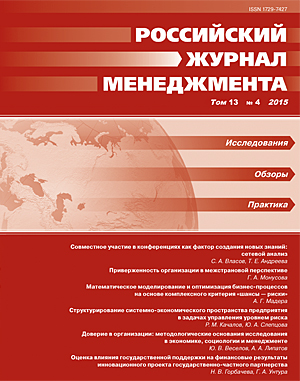Приверженность организации в межстрановой перспективе
Аннотация
В статье на основе данных международных обследований анализируется приверженность занятого населения различных стран своим организациям. В центре внимания два вопроса: насколько различаются развитые экономики по этому показателю и как институциональное устройство рынка труда влияет на межстрановые различия. Результаты исследования фиксируют вариацию степени приверженности работников своим организациям, которая в определенной степени объясняется различиями в институтах рынка труда: жесткое законодательство о защите занятости и распространение коллективных соглашений снижают уровень приверженности конкретной организации.
Ключевые слова:
приверженность организации, лояльность, мотивация, коллективные соглашения, законодательство о защите занятости, межстрановые сопоставления, институты защиты занятости
Скачивания
Библиографические ссылки
Translation of references in Russian into English
Загрузки
Опубликован
Как цитировать
Выпуск
Раздел
Лицензия
Статьи журнала «Российский журнал менеджмента» находятся в открытом доступе и распространяются в соответствии с условиями Лицензионного Договора с Санкт-Петербургским государственным университетом, который бесплатно предоставляет авторам неограниченное распространение и самостоятельное архивирование.





